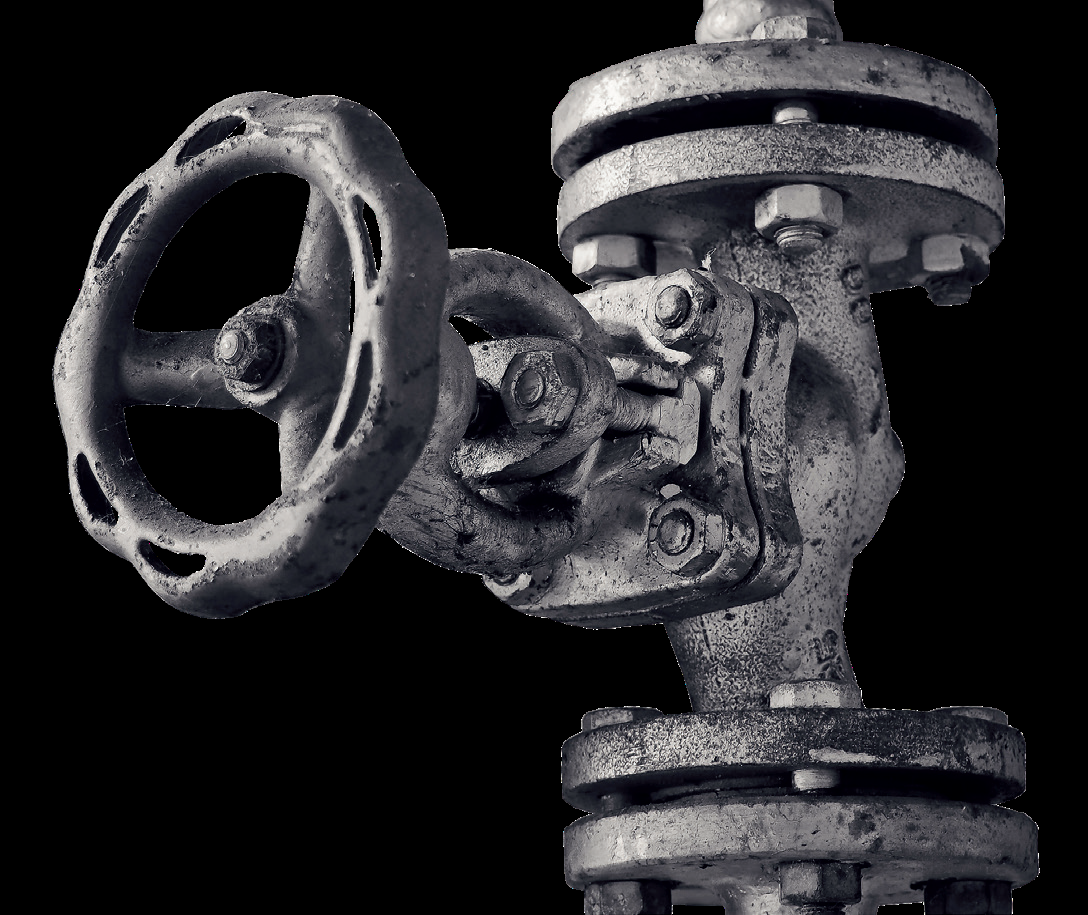When navigating the supply chain between end users, licensors, and suppliers, numerous potential difficulties may be encountered. When it comes to piping line class specifications and the conditions surrounding their creation and maintenance, communication between each party is crucial. Valve World Americas had the pleasure of speaking with Glen Beal, Technical Engineering Manager from MRC Global, regarding the factors taken into consideration for piping line class specifications at each stage and how to successfully navigate the supply chain.
By KCI Editorial
What are Piping Line Class Specifications?
Piping line class specifications, or PLC specs, distinguish the appropriate components and requirements that make up a piping line. This can range from its components, such as valves and fittings, to the pipes themselves. These specifications identify the parameters of what can and cannot be used for an individual, or group of, process fluid components under certain pressure and temperature conditions. They establish the types and particular forms of piping components allowed for a specific line or system of piping. The PLC provides guidance that is used to design, purchase, fabricate, operate, and maintain the pertinent piping system from cradle to grave. A PLC specification must be written to convey everything from rainwater to the most hazardous chemicals. Typically, the more critical the substance, the more explicit the specifications in both definition and application.
What Drives an End User?
When end users write a piping line class specification, their first goal is to figure out exactly what is driving the specifications: what are the factors that define this system? “Is the end user trying to define an innate type of process or fluid? Or are they defining something hazardous or critical? Either way, the end user must be careful to protect people and the environment, as well as the equipment,” explained Beal. The design of each specification is generated based on the tools and operations required to maintain and protect the system. They are also often written in coordination with their company’s corporate practices; and in compliance with the applicable industry codes and standards, (ASME, API, etc.) which can vary from system to system. “For end users, often the development philosophy focus of the spec is the internal operating parameters of the piping; allowing those to be the primary, if not the sole driver to define the PLC,” said Beal. While it is essential that the operating parameters are optimized to suit the needs of the media being transferred, focusing solely on these parameters may make matters challenging for the suppliers providing the materials necessary to complete the piping line.
“End users often make their specifications rather tight and narrow, or as specific as possible as a way to aid design and maintenance tools. While this may make sense from an end user perspective, it can lead to complications later in the supply chain with other parties. Overall, it can prolong the process of receiving the necessary materials or products,” continued Beal. If the scope of the piping line specifications is made slightly more flexible, receiving alternative materials to lower lead times becomes a viable possibility. Defining alterability can therefore be a huge benefit to both the supplier and end user, not only to reduce downtime, but also to provide an advantage when purchasing licensor technology.
Keeping Up with Technology as a Licensor
The difference between an end user’s and licensor’s focus can appear minimal, as they consider several of the same components when creating a piping line class specification. When analyzing the differences between end user and licensor specifications, the key distinction is that licensors create more unambiguous specifications for very specific applications. End users often come to licensors to buy their technology and specifications for unique, or particularly challenging conditions. “Generally speaking, if 40 pipeline specifications in total are required to define a facility, 10-15 could be licensor or technology-sanctioned consecrated PLC specs and the remaining 25-30 facility PLCs for degraded and common mediums could come from the owner’s own library,” explained Beal. “Licensor technology is often required for intense pipeline conditions, such as applications where a valve or piping is part of extreme and/or critical processing (i.e., controlled injection, temperatures upwards of 400°C.)”
Although they are more specialized, licensors tend to face many of the same struggles as end users when creating a piping line specification; they too must align with the practices of the owner and with codes and standards when writing specifications. “A most distinctive challenge,” added Beal, “is the ever-progressive nature of technology. Technology is constantly evolving in every sector around the globe, which makes it challenging to keep up with the latest licensors’ technology. By the time a technology is bought, studied, and has a plant designed, multiple years may have passed, and the technology has likely advanced or been adjusted. If an end user’s line class specifications are based on licensed technology from three, five, or ten years prior, there is a big gap – a disconnect. The valve that was best suited to the application three years ago may no longer be the most viable. (i.e., changes in valve trim or even valve style.)
If the end user and the licensor do not have a continual working relationship, it can be costly and time consuming to determine another solution.” To keep up with technology evolution, it is critical that there is continued communication and good working relationships between the end user, the licensors, and their suppliers.

The Role of a Supplier
A supplier’s role, in terms of pipeline specifications, is to understand and consider the external factors that contribute to the development and fabrication of the pipeline. Although they must think like an end user to anticipate how receptive the end user will be to the materials received, they must also consider availability of materials, lead times, and several other potentially unforeseeable circumstances.
Suppliers often receive a bill of materials from the end user and must make offers based solely on the information provided for the required pipeline materials. This narrows the scope of the suppliers’ focus. When selecting a material from the manufacturer, the supplier must remain within the parameter limits given by the end user.
As pipelines tend to have precise conditions, different types of valves and materials are often specified. “The issue with this process,” explained Beal, “is that what an end user requests may not always be available. This is a phenomenon that has become more frequent recently due to all the supply chain disruptions. If, for example, a spec demands that a valve must be suitable for temperatures up to 400°C, but the valve will only ever reach up to 300°C while in service, it may be in the best interest of the end user to accept the lower temperature valve. Suppliers may be able to get that material faster from the manufacturers if the end user will accept alternatives. It is not unusual for a distributor to have a valve in inventory that will function as an alternative, but due to the lack of communication at the technical level, delays and/or extra expenses are just accepted.”
To enable successful critical deliveries, alternative valve solutions can be key. Beal believes that both end users and licensors should strive to communicate when the specifications allow for alternatives (i.e., top entry specified but split body is an acceptable alternative; or metal seating specified but graphite seating is an acceptable alternative). Details of this nature are extremely beneficial. When communicated, it allows for offering the quickest and best available options to the end user.
The Need for Better Communication
The underlying problem within each level of the supply chain is the lack of communication between channels. This can make the entire supply chain unnecessarily difficult to maneuver for everyone involved. Much of this comes down to the lack of information shared between the end users and suppliers when it pertains to possible alternatives to materials. Suppliers, who receive only a bill of materials required by the end user, would benefit from more specific instructions on when it is, and is not, acceptable to offer alternatives.
“As a distributor or manufacturer, it is important to know more about the situation. For example, where is the component going? What are the restrictions and requirements? Those details are often not in the purchasing documents, but they are in the piping specifications,” explained Beal. Having this supplementary information allows suppliers to recommend materials that may save the end users money, as well as be more attainable.
For example, if a supplier discovers the manufacturer is out of stock of a material necessary for the purchase order line items, having a PLC or additional instructions supplied with the order from the end user may allow a supplier to recommend a faster alternative as opposed to waiting months for the original request. “A balanced description and supplemental information that communicate requirements and some indication of if alternatives could be suggested or not would go a long way. It would immediately open the communication cycle,” recommended Beal.
Choosing a Successful Supplier
When it comes to piping line class specifications and navigating the supply chain, Beal recommended choosing a distributor or supplier who will get the end user the desired product in the timeliest manner for the best price. “You want a distributor or supplier that has influence or pull with the manufacturer for the best results,” concluded Beal. Communication and standout services make all the difference when it comes to choosing a supplier. The end user gets the most benefit when he is working with a supplier that has strong relationships with manufacturers, a good understanding of technology, and a strong desire to work proactively in partnership with the end user to offer solutions and resolve issues.
About the Expert



